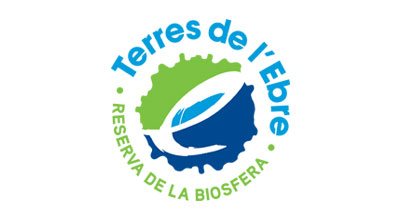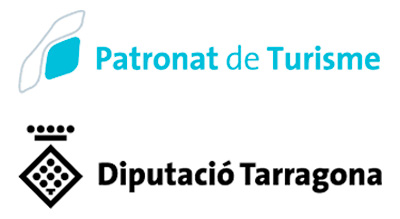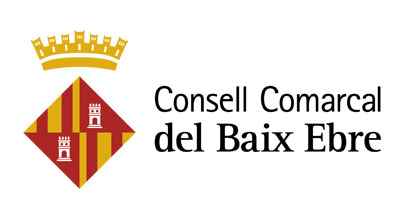Carrilet de la Cava Greenway Nature Trail
Route Description
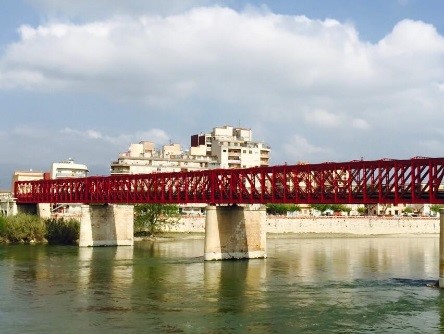
The Carrilet de la Cava Greenway is a 7-kilometre itinerary that begins in the outskirts of the town of Tortosa and runs parallel to the irrigation canal on the Ebro River’s left bank. The Carrilet de la Cava building is located in the centre of Tortosa. The Val de Zafan itinerary links up with the urban cycling lane that takes us to the start of the Carrilet de la Cava Greenway. Throughout 7 km, we will come across different elements that used to form part of the railway line: bridges, halt buildings, an old station, etc.
The old Font de Quinto fort, in Campredó, Tortosa, stands out. Built in the 14th century in the Gothic style, with twin towers called Carrova and Sant Onofre, it watched over the estuary at the entrance to Tortosa, providing safety and protection to the inhabitants of the Campredó countryside.
The restored itinerary ends in the area of La Pedrera, in La Aldea, where it links up with the Ebro Nature Trail, which continues along uncrowded paths winding through rice fields as far as the mouth of the Ebro River, right in the centre of the Delta del Ebro Nature Park, in Deltebre.
Before beginning our journey along the Carrilet de la Cava Greenway Nature Trail, we recommend that you visit the locality of Tortosa. Its old town was declared a Historic Artistic Site in 1976 and still reflects the atmosphere of its illustrious past. Its main tourist sights are the National Tourism “Parador,” La Zuda Castle (10th c.) featuring defensive fortifications (17th and 18th c.), Cathedral of Santa María (14th-18th c.), Monastery of Santa Clara (13th c.), the Bishop’s Palace (14th c.) and Reales Colegios (16th c.), a unique example of Catalonian Renaissance, in relation to which the Renaissance Festival is held, among many other architectural styles. It is also worth highlighting that from this town, the greenway connects with a section of low-traffic road that takes us to the Val de Zafán Greenway Nature Trail (Baix Ebre section).
.jpg)
In the case of railway enthusiasts, we recommend visiting Tortosa Municipal Park to enjoy seeing the old steam locomotive of the Carrilet de la Cava railway, a Hunslett 220-T from 1890 that was built in Leeds, England, which has now been restored and included in the National Heritage List.
We leave Tortosa behind and set off on our adventure along the greenway. We peddle or walk alongside the irrigation canal on the left bank of the renowned Ebro River, surrounded by a striking landscape of extensive rice fields.
About 2.5 kilometres into our trip we come to Campredó, a decentralised municipal entity that forms part of the Tortosa municipal district. Here we can stop and enjoy the delicious local gastronomy. We also have the opportunity to visit the jetty to enjoy a sail along the Ebro River. We recommend visiting the old Font de Quinto tower.
After travelling around 4 kilometres, we get even closer to the Ebro River, our travelling companion along this singular route. From here to the end of the greenway, the riverbank will remain on our right hand, which will enable us to enjoy a much cooler atmosphere, especially during the long summer days.
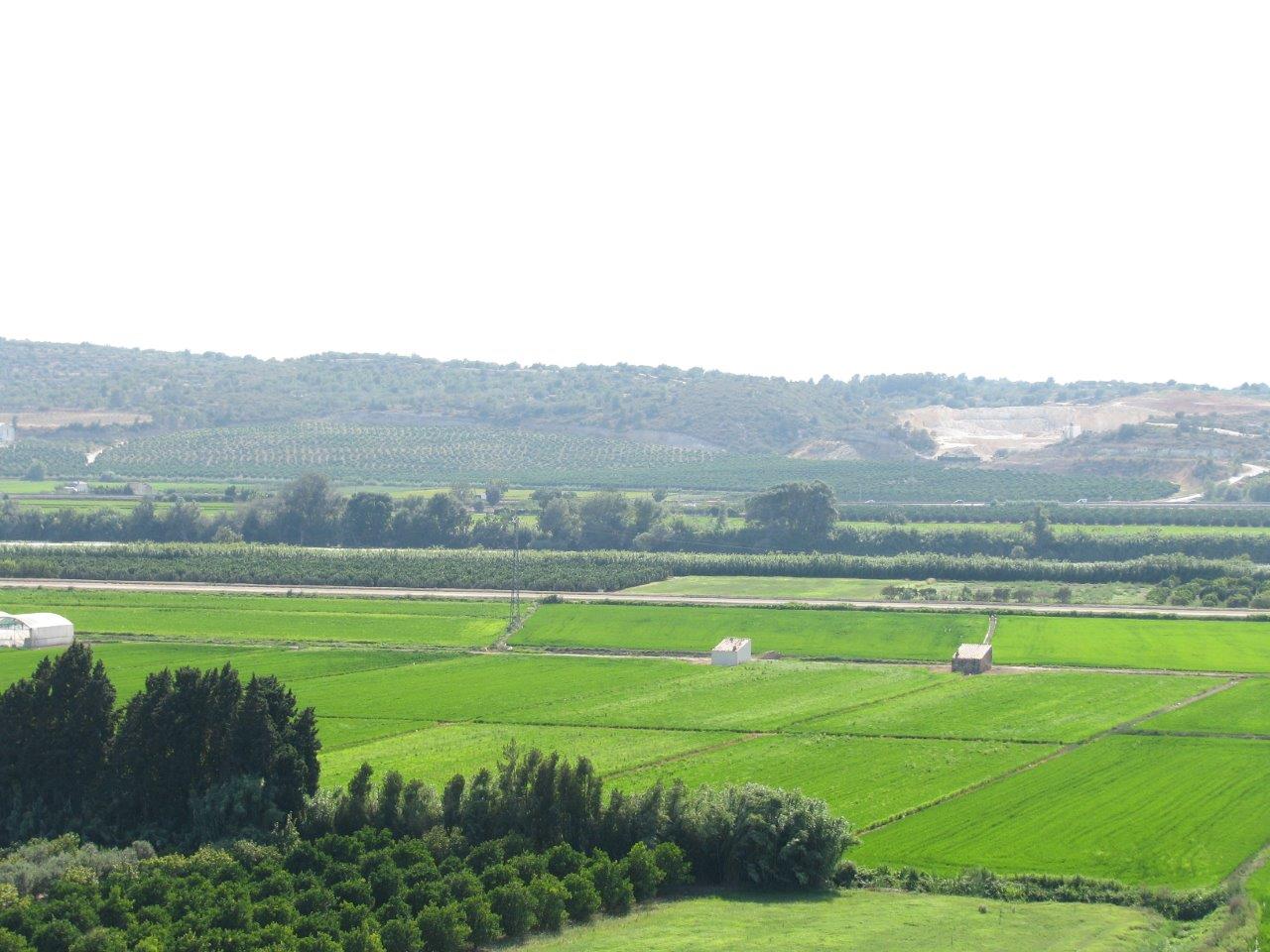
This is where the restored section of the old railway line ends. This area is known as La Pedrera. Here we can see how the canal receives water from the Ebro River and takes it to irrigate the rice fields.
Our trip along the greenway has come to an end. However, for those wanting to journey on, there is the option of extending our route for another 50 kilometres along the Ebro Nature Trail that crosses the Delta del Ebro Nature Park, as well as the municipal districts of La Aldea and Deltebre, taking us as far as the mouth of the Ebro River in Deltebre (Riomar).
At this point we start the Ebro Nature Trail. We wind our way through vegetable gardens and large expanses of rice fields in the Ebro Delta, as far as the municipal district of La Aldea. There we will undoubtedly have the chance to savour the area’s excellent cuisine featuring fine rice from the Ebro Delta, since we find ourselves in the Delta del Ebro Nature Park.
In the outskirts of the municipal district we will come across the old tower and chapel of La Aldea. It is worth mentioning the great variety of fauna in the area, which attracts birdwatchers from all over the world.
Finally, the last kilometres of the Ebro Nature Trail run parallel to the irrigation canal on the left bank of the Ebro, where we will come to the mouth of the Ebro River in the Riomar housing estate, which is very popular with tourists.
Información turística Terres del Ebre, Reserva de la BIosfera

In 2013, Les Terres de l'Ebre, located in the southern tip of Cataluña, 180 km from Barcelona and 170 km from Valencia, and 50 minutes from Reus Airport, was declared a Biosphere Reserve by UNESCO. See here>>.
It features several interesting tourist sites such as ELS PORTS NATURE PARK and Parcial de los Hayedos Nature Reserve, which reflects the importance of the region’s natural values, featuring special protection aimed at guaranteeing the preservation of such values and ensuring the sustainable exploitation of its resources.
Also part of the landscape are the “masías” (farms), lime kilns, snow wells, coal bunkers, dry stone walls, and cobblestone paths. Despite the intensive humanisation that this area experienced in the past, it is now a region of untamed nature and wildlife featuring outstanding flora and fauna, such as the Spanish ibex. The area of Els Ports is spread over nine municipal districts in the regions of El Baix Ebre, El Montsia, and La Terra Alta.
In 1983, the Catalonian Government declared the creation of the DELTA DEL EBRO NATURE PARK, covering an area of 320 km² whose inhabitants live in harmony with the preservation of its valuable natural heritage. It is the most important aquatic habitat in the Western Mediterranean, after the Camargue (a regional park in France), and the second most important in Spain, after Doñana National Park.
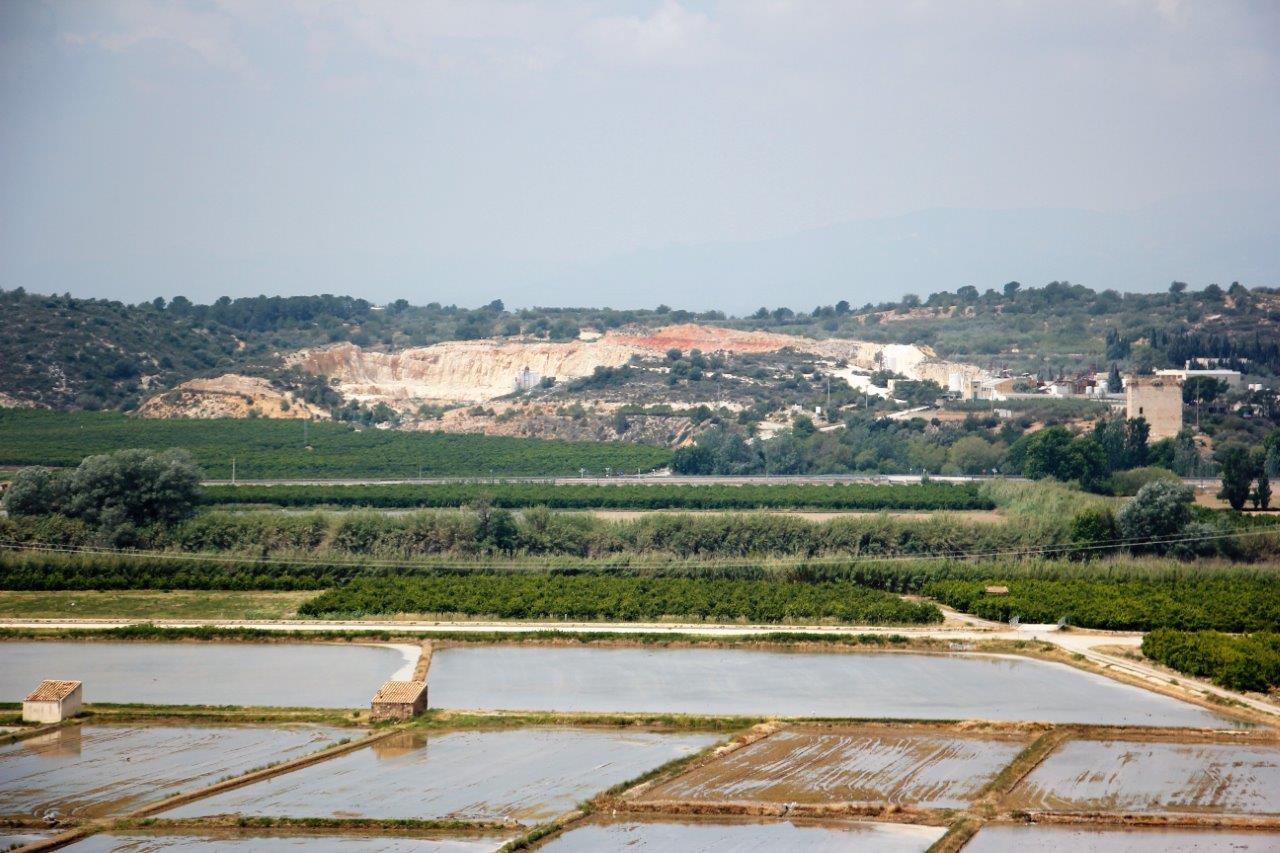
The mouth of the Ebro is one of those unique places worth discovering. The river and sea come together to form the delta, where we find large expanses of deserted beaches, dunes, lagoons, islands, peninsulas, and bays. A magical, ever-changing place that is renowned for its nature conservation and its varied flora and fauna, where the flamenco is the animal par excellence and rice growing modifies the landscape, changing the colours of the delta throughout the four seasons.
This area includes the protected nature reserve of El Garxal Lagoon, a 2.5-km itinerary for trekkers or cyclists, facing the islands of Sant Antoni and Buda. The Zigurat viewpoint, located at the mouth, features views of the river, the sea, the islands, the flora and fauna, and the spectacular landscape. Sailing along the mouth of the river, or savouring the mussels produced in the interior of the two bays, are unique experiences to be enjoyed as a family –we will be amazed by this landscape featuring land, islands, and sea, and by the large number of birds on display.
SAILING along the river or the sea provides us with a range of possibilities to be relished with our family and friends. We can enjoy the tourist experience of sailing along the Ebro River in a “llagut,” a wooden boat par excellence, made by carpenters and caulkers, or participate in adventure sports.
In relation to sailing along the sea, you can rent a boat with or without a skipper, or enjoy a sail along the coast, featuring a great variety of beaches in the coastal localities.
The mild summer temperatures of the Mediterranean climate make our destination the ideal place for enjoying BEACHES AND COVES; the former, large deserted expanses of fine sand, with moving dunes throughout the area of the Delta del Ebro Nature Park, and the latter, small rocky coves of crystal-clear water surrounded by characteristic Mediterranean vegetation in the municipal districts of L'Ampolla, El Perelló, and L'Ametlla de Mar.
The coastline of the Les Terres de l'Ebre features maritime elements such as old lighthouses, marinas, river ports, and fishing ports and fish markets.
THE EBRO RIVER is the backbone par excellence that identifies the Les Terres de l'Ebre Biosphere Reserve. This nature reserve’s advantageous conditions in terms of transport, irrigation, natural resources, and protection have favoured the development of population centres since the distant past, being the real driving force behind this human habitat down through the ages.
The Ebro bathes a large part of the municipal districts included in the Biosphere Reserve, which features water sports such as rowing, canoeing, fishing, or sailing.
The area enjoys a great variety of fine food and wines. The Delta del Ebro and Els Ports nature parks, along with the Ebro River, have shaped a special relief that generates different mosaics of gastronomic landscape.
.jpg)
Fish and seafood from the coast, flocks and farms in the mountains, the production of “Delta de l'Ebre” rice, “Terres de l’Ebre” citric fruits and clementines, “Baix Ebre-Montsià” and “Terra Alta” olive oil, the production of “Terra Alta” wine, etc, generate km 0 products and other unique ones such as elvers, eels, oysters and mussels from the Ebro Delta, whose unique combination of freshwater and seawater gives them a very special flavour. The region’s typical desserts include cakes, croquettes, “puñetazos,” “coque de broche,” “algarrobas del Papa,” “periquillos,” “panoli,” “casquetas,” and “paracotas.” There is a list of companies whose products are certified with the “Terres de l'Ebre, Reserva de la Biosfera” brand.
In summary, the municipal districts of the Les Terres de l'Ebre Biosphere Reserve feature a great variety of tourist sites where you can discover and enjoy unique experiences, such as Els Ports Nature Park, the Delta del Ebro Nature Park, the Carrilet de la Cava Greenway-Nature Trail, and the Val de Zafan Greenway-Nature Trail, which links the regions of La Terra Alta with the Baix Ebre and, in the near future, with the Montsià, the Sierra de Cardo mountains, the Meravelles Caves in Benifallet, among other places.
The historic-artistic sites of Horta de Sant Joan, Arnes, Miravet Castle, or Tortosa, with its exceptional old town that was declared a historic site in 1976, featuring a notable fortified ensemble, the Cathedral of Santa María, the Reales Colegios, and the Bishop’s Palace, among many more, Battle of the Ebro sites, the World Heritage cave paintings of El Perelló and Ulldecona, Iberian settlements such as those of Tivissa and La Moleta del Remei, and the L’Assut de Xerta-Tivenys dam will enable us to become acquainted with this region’s interesting historic past. The wide range of nature activities such as sea and river experiences, the diversity of sand beaches and coves, wine tourism in La Terra Alta with cooperative wineries in Gandesa and Pinell de Brai, trekking, bicycle touring, and birdwatching will delight us with unique and unforgettable tourist experiences.
In view of all of the above, we invite you to discover the Tierras del Ebro Biosphere Reserve, a unique area for enjoying tourist experiences surrounded by nature:


